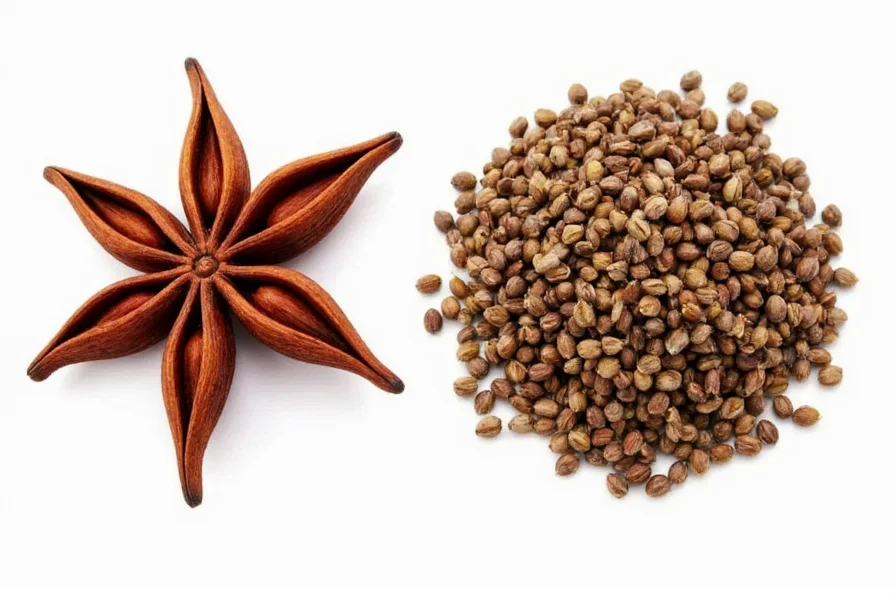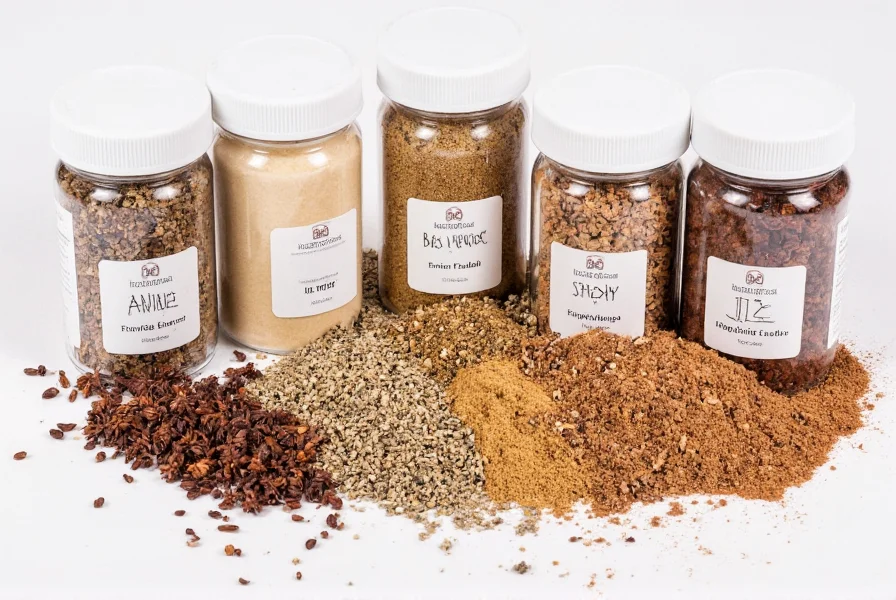Anise, with its distinctive licorice-like flavor, is a staple in many culinary traditions from Mediterranean baking to Chinese five-spice blends. When you find yourself without this aromatic seed, knowing effective substitutes can save your recipe while maintaining the intended flavor profile. Whether you're baking holiday cookies, preparing Middle Eastern dishes, or crafting homemade liqueurs, understanding the nuances of anise alternatives ensures your culinary creations remain successful.
Understanding Anise and Its Unique Flavor Profile
Anise (Pimpinella anisum) seeds contain anethole, the compound responsible for their characteristic sweet, licorice-like taste. This flavor component makes anise valuable in both sweet and savory applications, from biscotti and rye bread to stews and braises. When seeking substitutes, the goal is to match this specific flavor profile while considering how the replacement will interact with other ingredients in your recipe.
Top Anise Substitutes Ranked by Effectiveness
| Substitute | Flavor Comparison | Best For | Substitution Ratio | Special Considerations |
|---|---|---|---|---|
| Star Anise | Nearly identical anethole content, slightly more intense | Braising liquids, mulled wines, baked goods | 1 whole star = 1 tsp anise seeds | Remove before serving; stronger in liquid applications |
| Fennel Seeds | Milder, sweeter, with herbal notes | Baked goods, salads, fish dishes | 1:1 replacement | Add 10-15% more for stronger flavor impact |
| Anise Extract | Concentrated anise flavor | Baking, frostings, beverages | ½ tsp extract = 1 tsp seeds | Alcohol-based; not suitable for all dietary needs |
| Licorice Root | Sweeter, earthier licorice flavor | Teas, syrups, medicinal applications | ¼ tsp powdered root = 1 tsp seeds | Stronger medicinal taste; use sparingly |
| Caraway Seeds | Earthy, with subtle licorice notes | Rye bread, goulash, cheese dishes | ¾ tsp caraway = 1 tsp anise | Add ¼ tsp fennel for better flavor match |
Star Anise: The Closest Flavor Match
Star anise (Illicium verum) contains the same primary compound (anethole) as anise seed, making it the most chemically similar substitute. While botanically unrelated (star anise comes from a different plant family), it delivers nearly identical flavor characteristics. When using star anise as an anise seed substitute for baking, remember that its flavor intensifies during cooking, especially in liquid-based recipes. For dry applications like cookie dough, grind the star anise to match the texture of anise seeds.

Fennel Seeds: The Versatile Alternative
Fennel seeds offer the most versatile substitute for anise in everyday cooking. Their milder licorice flavor works well in both sweet and savory applications without overwhelming other ingredients. When substituting fennel seeds for anise in Italian sausage recipes or Scandinavian baked goods, you'll notice a slightly different but equally delicious result. For optimal substitution in baking, toast the fennel seeds lightly before grinding to enhance their aromatic compounds.
Specialized Substitutes for Specific Applications
Anise Extract for Baking Applications
When looking for an anise seed substitute for baking, anise extract provides concentrated flavor without texture changes. Use half the amount of extract compared to whole seeds, as the liquid form delivers more potent flavor. For gluten-free baking where texture matters, this substitute works particularly well since it doesn't alter the crumb structure.
Licorice Root for Non-Alcoholic Alternatives
For those seeking a non-alcoholic anise substitute, particularly in herbal preparations or for children's recipes, powdered licorice root offers a natural alternative. Its sweeter profile works well in teas, syrups, and certain baked goods. Use sparingly as it can become bitter if overused. This substitute shines in Middle Eastern desserts like ma'amoul where traditional anise might be too strong.
Caraway and Dill Combinations for Savory Dishes
In savory applications like rye bread or German sauerkraut, a combination of caraway seeds (¾ part) and dill seeds (¼ part) creates an excellent anise substitute. This blend mimics the complex flavor profile while adding complementary herbal notes. For authentic Scandinavian aquavit substitutes, add a pinch of coriander to this mixture for additional depth.
Recipe-Specific Substitution Guidelines
Not all anise substitutes work equally well across different recipes. Understanding which substitute performs best in specific applications ensures culinary success:
- Mediterranean Baking: Use fennel seeds at 1:1 ratio in biscotti or pizzelle recipes
- Middle Eastern Dishes: Star anise works best in stews and rice pilafs (use 1 star per serving)
- Cocktail Preparation: Anise extract (½ tsp) replaces 1 oz of anise-flavored liqueur
- Vegetarian Sausage: Combine equal parts fennel and caraway seeds for authentic flavor
- Gluten-Free Baking: Ground star anise provides better texture integration than whole seeds
Common Substitution Mistakes to Avoid
Many home cooks make critical errors when substituting for anise that compromise their final dish. When searching for the best substitute for anise in your recipe, avoid these pitfalls:
- Using equal amounts of stronger substitutes like star anise in dry applications
- Adding substitutes too late in the cooking process (anise compounds need time to infuse)
- Ignoring texture differences between whole seeds and ground alternatives
- Overcompensating with multiple substitutes simultaneously
- Using anise hyssop herb as a direct substitute (different flavor profile despite the name)
Creating Custom Anise Blends for Specific Cuisines
For advanced cooks seeking the perfect anise substitute for specific culinary traditions, consider these custom blends:
- Mexican Mole Substitute: ½ tsp cumin + ¼ tsp fennel + ¼ tsp cloves
- Chinese Five-Spice Alternative: 2 parts star anise + 1 part fennel + 1 part cloves
- Mediterranean Fish Rub: Equal parts fennel, coriander, and dill seeds
- Vegan Ouzo Substitute: 1 cup water + 1 star anise + ¼ tsp fennel + 1 tbsp lemon zest (simmered)
These specialized blends address the nuanced requirements of different culinary traditions while providing appropriate anise alternatives for various dietary restrictions and ingredient availability issues.












 浙公网安备
33010002000092号
浙公网安备
33010002000092号 浙B2-20120091-4
浙B2-20120091-4